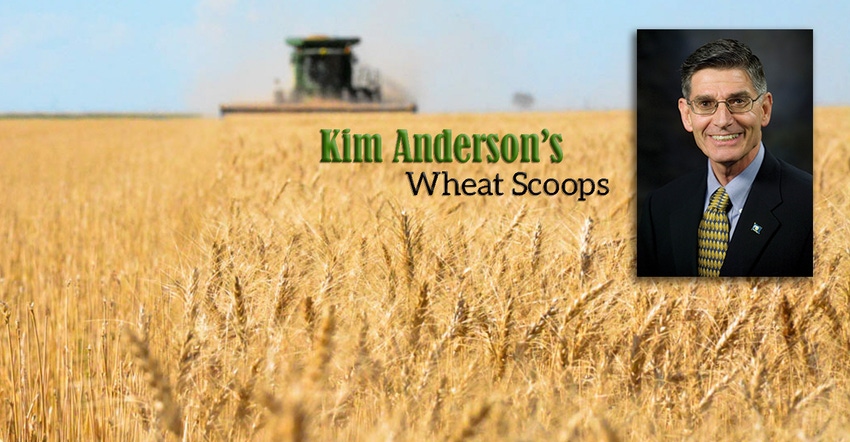April 28, 2022

At this writing, the wheat 2022 harvest forward contract price is $11.10 in both Medford, Okla., and Perryton, Texas. There is a 50/50 chance that actual 2022 wheat harvest prices will be above $11.10 and a 50/50 chance that the prices will be below $11.10. How much above or below is anybody’s guess.
The question is, “What will the price of wheat be during the June through July time period when Oklahoma and Texas wheat is being harvested?”
The record wheat harvest price (June through July) was $8.82 in 2008. The next highest harvest price was $8.35 in 2011. Some analysts estimate that, without the Ukraine/Russia war, Oklahoma and Texas wheat prices would be $2.50 to $3.00 lower (using $3 implies $8.20 to $8.70).
The 2022 hard red winter wheat harvest futures contract price (KEN22) is $11.70, $10.30 for the 2023 (KEN23) and $8.35 (KEN24) for the 2024 wheat harvest price.
See, COTTON SPIN: How will this weather market play out?
The Medford and Perryton harvest contract basis is a minus 60 cents. Using the current basis for 2023 and 2024 produces projected harvest prices of $9.70 and $7.75.
KEN (July) wheat futures contract prices for 2023 and 2024 support the market analysts’ estimate of the war’s impact on prices ($11.10 - $3 = $8.10).
An Oklahoma State University wheat budget (11/30/21) for the 2022 wheat crop indicated variable costs of $285 per acre. At 40 bushels per acre, the breakeven price is $7.13 per bushel.
A $7.13 breakeven price sounds good with $11.10 prices, but current relatively poor crop conditions may make 40 bushel per acre wheat wishful thinking. Higher fertilizer, chemical, and harvest costs may also make the $285 per acre cost estimate low.
No one knows what the future will bring. However, one scenario is: When the Ukraine/Russia war ends, Russia’s 2022/23 wheat production and exports will be near average. Ukraine’s 2022 wheat production and exports will be reduced by 25%, and Ukraine’s 2023 wheat production and exports will be near average.
In this scenario, 2022/23 world wheat production may be within 400 million bushels of the 2021/22 wheat production of 28.6 billion bushels. With world 2022/23 beginning wheat stocks of 10.2 billion bushels, total world wheat 2022/23 supply would be 38.4 billion bushels.
Using 2021/22 world wheat use for 2022/23, the 2022/23 world wheat ending stock would decline from 2021/22’s estimated 10.2 billion bushels to 9.4 billion bushels. The 2022/23 stocks-to-use ratio would be 32.4% compared to 35.2% for 2021/22. The world’s five-year wheat stocks-to-use ratio is 37.8%.
This scenario is probably the best-case scenario for world wheat, and it supports relatively high wheat prices ($8 or higher) for the 2022 world’s harvest.
Another issue is input prices. Ending the war would probably result in increased fertilizer, oil, and fuel exports from the Black Sea area. Ocean freight costs would also decline. The result would be lower production costs.
Relatively high wheat prices would probably result in an increase in world planted wheat acres and input uses. Input demand would also increase for production of other major crops because of higher commodity prices. The result would be relatively higher input costs.
Increased production costs increase the capital required to produce crops. Increased capital requirements increase the financial risk of farming. This is where production risk (weather) raises its ugly head.
In the past, production risk has been higher than price risk. Current market conditions may make price risk as high or higher than production risk. Together, price and production risk make crop insurance an essential part of a farmer’s life.
Record prices come with higher risk. There is no guarantee but, at least for a while, it looks like price will be on the farmer’s side.
Read more about:
DroughtAbout the Author(s)
You May Also Like






